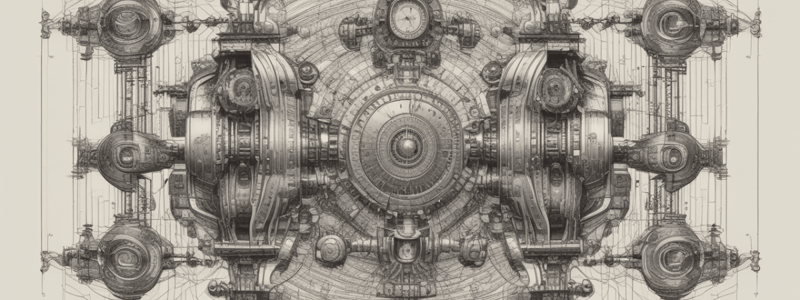Podcast
Questions and Answers
What happens to states containing q2 as its component in the DFA?
What happens to states containing q2 as its component in the DFA?
- They are not considered in the DFA.
- They are treated as initial states of the DFA.
- They are removed from the DFA.
- They are treated as final states of the DFA. (correct)
What is the purpose of Step-02 in the NFA to DFA conversion?
What is the purpose of Step-02 in the NFA to DFA conversion?
- To add transitions of the final state to the transition table.
- To add transitions of the start state to the transition table. (correct)
- To remove dead states from the transition table.
- To minimize the number of states in the DFA.
What is the representation of a dead state in the transition table?
What is the representation of a dead state in the transition table?
- {q1, q2}
- q0
- {q0, q1, q2}
- Ø (correct)
What is the result of the NFA to DFA conversion process?
What is the result of the NFA to DFA conversion process?
What is the significance of the asterisk (*) symbol in the transition table?
What is the significance of the asterisk (*) symbol in the transition table?
Flashcards are hidden until you start studying
Study Notes
Converting NFA to DFA
- The process of converting a Non-Deterministic Finite Automata (NFA) to a Deterministic Finite Automata (DFA) involves six steps.
- The transition table for the given NFA is the starting point for the conversion process.
Step 0: Initial Transition Table
- The initial transition table for the NFA is created, which includes the states and alphabets.
- The transition table shows the next states for each current state and alphabet.
Step 01: New Set of States and Transition Table
- A new set of states Q' is created for the DFA.
- A new transition table T' is created for the DFA.
Step 02: Transitions for Start State
- The transitions for the start state q0 are added to the transition table T'.
- The transition table T' is updated with the new states and alphabets.
Step 03: Adding New States
- New states are added to the transition table T' based on the transitions.
- The new states are added to the set of states Q'.
Step 04: Repeating Step 03
- Step 03 is repeated until no new states are added to the transition table T'.
- The process stops when there are no new states to be added.
Step 05: Final States and Transition Table
- The final states of the DFA are determined based on the containing states of the NFA.
- The final transition table T' is created, which includes all the states and alphabets.
Step 06: Completing the DFA
- The DFA is complete, and the transition table T' is the final transition table.
- The DFA can be drawn based on the final transition table.
Important Points
- When converting a given NFA to a DFA, it is important to note the following points:
- If any new state is present in the transition table T', repeat Step 03 until no new state is present.
- States containing the final state of the NFA as its component are treated as final states of the DFA.
- The final transition table T' is the complete transition table of the required DFA.
Studying That Suits You
Use AI to generate personalized quizzes and flashcards to suit your learning preferences.




